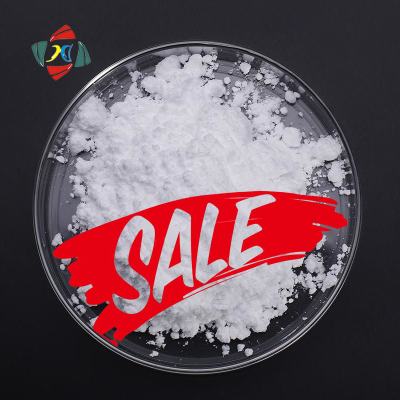-
Categories
-
Pharmaceutical Intermediates
-
Active Pharmaceutical Ingredients
-
Food Additives
- Industrial Coatings
- Agrochemicals
- Dyes and Pigments
- Surfactant
- Flavors and Fragrances
- Chemical Reagents
- Catalyst and Auxiliary
- Natural Products
- Inorganic Chemistry
-
Organic Chemistry
-
Biochemical Engineering
- Analytical Chemistry
- Cosmetic Ingredient
-
Pharmaceutical Intermediates
Promotion
ECHEMI Mall
Wholesale
Weekly Price
Exhibition
News
-
Trade Service
At present, with the increasing prevalence of diabetes, the aging of the population, lifestyle changes and other factors, the number of patients with diabetic nephropathy (DKD) is increasing
.
So, apart from lifestyle interventions, are there any drugs that can prevent chronic kidney disease (CKD) in people with diabetes?
In October 2022, a post-mortem analysis of the DECLARE-TIMI 58 study published in Diabetes Care concluded that dapagliflozin was able to delay the decline in renal function in patients with type 2 diabetes mellitus (T2DM) with cardiovascular risk factors, suggesting that dapagliflozin played a role in the early prevention of DKD and could be included in the primary prevention strategy
of CKD in patients with T2DM.
Study the design
Methods
The DECLARE-TIMI 58 study included 17,160 patients with T2DM who
were at high risk of arteriosclerotic cardiovascular disease (ASCVD) or ASCVD.
At the time of enrollment, patients were between 6.
5% and 12% at baseline glycosylated hemoglobin (HbA1c), and the creatinine clearance ≥ 60 ml/min
.
Patients were divided into a 1:1 ratio of dapagliflozin (10 mg/day) and a control group
.
This post-mortem analysis was mainly based on the analysis
of patients after KDIGO's CKD risk stratification.
The preset renal-specific composite endpoint was to estimate a sustained decrease in glomerular filtration rate (eGFR) ≥40%, or eGFR <60 ml/min/1.
73 m2, end-stage renal disease (ESKD) or renal-related death<b11>.
Other secondary endpoints were the incidence of eGFR decline in patients with different CKD risk stratification, and changes in eGFR slope in
patients from 6 months to 4 years and from baseline to 4 years.
Results of the study
Results
In the DECLARE-TIMI 58 study, according to CADGEO's CKD risk stratification indicator, 10,958 patients (65.
1%) were low-risk patients, 4243 (25.
2%) were at moderate risk, 1403 (8.
3%) were high-risk people, and 238 (1.
4%) were extremely high-risk people
.
The risk population composition of the dapagliflozin group and the control group was similar (P = 0.
923).
of developing preset renal-specific compound endpoints.
Overall, the risk was significantly reduced by 47% in the dapagliflozin group compared with the control group (HR = 0.
53; 95% CI, 0.
43 to 0.
66; P<0.
0001).
<b11> The renal-specific compound endpoint of occurrence HR after risk stratification in the dapagliflozin and control groups according to KDIGO risk stratification is shown in the table below (Table 1
).
Table 1 Specific ratio of renal-specific composite endpoints to HR after risk stratification
In addition, dapagliflozin delayed the risk of eGFR decline compared with the control group, with eGFR reduction rates ≥ 57%, ≥50%, ≥40%, and ≥30% HRs of 0.
52, 0.
57, 0.
55, and 0.
70 (P<0.
05),<b10> respectively.
Compared with the control group, dapagliflozin delayed the decline of eGFR, whether for a period of 6 months to 4 years (0.
87 ml/min/1.
73 ㎡ between groups) or a baseline to 4 years period (inter-group difference: 0.
55 ml/min/1.
73 ㎡; P<0.
0001), the variation in eGFR in the dapagliflozin group was small<b10>.
The control group had a higher rate of eGFR decline compared to the dapagliflozin group, whether it was between 6 months and 4 years (0.
87 ml/min/1.
73 ㎡ difference between groups) or from baseline to 4 years (difference between groups: 0.
55 ml/min/1.
73 ㎡; P<0.
0001), there was little difference in the variation of eGFR in patients in the dapagliflozin<b10> group.
Overall, in patients with T2DM who have co-existing cardiovascular risk factors, dapagliflozin can reduce the incidence of renal disease in patients
.
This post-mortem analysis showed that dapagliflozin could be used as a primary prevention strategy
for CKD in patients with T2DM.
Mosenzon O, Raz I, Wiviott SD, et al.
Dapagliflozin and Prevention of Kidney Disease Among Patients With Type 2 Diabetes: Post Hoc Analyses From the DECLARE-TIMI 58 Trial.
Diabetes Care.
2022 Oct 1; 45(10):2350-2359.







